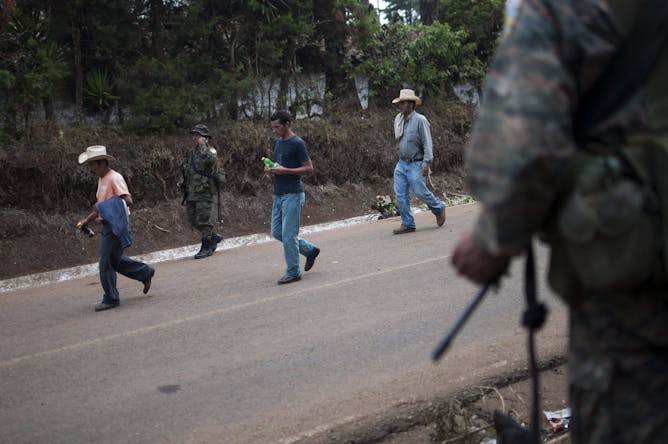|
The federal election is just weeks away, the first to be held in Canada since “fake news” became a global phenomenon that impacted elections in other western democracies. Small armies of journalists and even social media platforms are hoping they will be able to help the public identify made-up stories intended to deceive and sow dissention. But will that be enough? Today in The Conversation Canada, Fatemeh Torabi Asr tells us about a project at Simon Fraser University that uses algorithms to identify the linguistic characteristics of fake news. She writes that fake news articles use more expressions that are common in hate speech, as
well as words related to sex, death and anxiety.
We also examine why men accused of sexual harassment often receive good-character testimonies from other women – and why those testimonies are usually irrelevant to the accusations – and how “gaping holes” still remain in the law that allows Canadian companies to violate human rights in other countries.
And finally…the calendar suggests summer is quickly fading away. But there’s still time to hit the beach before the snow flies. Early childhood education experts Lotje Hives and Tara-Lynn Scheffel of Nipissing University write about how a day at the beach offers kids a wonderful learning experience. “Children’s inquisitive minds crave opportunities that allow them to become designers, builders, mathematicians and innovators of their world,” they write.
Regards,
|

In an attempt to address the growing problem of fake news online, an algorithm that identifies patterns in language may help distinguish between factual and inaccurate news articles.
Shutterstock
Fatemeh Torabi Asr, Simon Fraser University
Using machine learning and natural language processing, researchers are developing an algorithm that can distinguish between real and fake news articles.
|

Al Franken, second from right, resigned from the U.S. Senate last year after accusations of sexual impropriety.
(AP Photo/Andrew Harnik, File)
Martina Orlandi, McGill University
Good-character testimonies from some people don’t shield a person from being questioned about whether they have sexually harassed others.
|

In this May 2013 photo, residents walk past a cordon of soldiers standing guard at a checkpoint in San Rafael Las Flores, Guatemala, near a mine owned by Tahoe Resources Inc.
(AP Photo/Luis Soto)
Hassan M. Ahmad, University of Toronto
Despite a recent Tahoe Resources settlement and apology to Guatemalan protesters, Canadian companies can still get away with crimes committed abroad — even in the face of insurmountable evidence.
|

Memories and the experiences gained through play are foundational to one’s lifelong learning.
(Shutterstock)
Lotje Hives, Nipissing University; Tara-Lynn Scheffel, Nipissing University
Through a play day filled with choices at the beach with supportive adults, unexpected challenges and social experiences all help children to build far more than sand castles.
|

Les chercheurs sont friands de déplacements à l'étranger. Or, les transports contribuent de façon importante aux émissions globales de gaz à effet de serre.
Shutterstock
Julie Talbot, Université de Montréal; Julien Arsenault, Université de Montréal
Une conférence en Autriche, une autre en Chine, des travaux de recherche en Indonésie… Plusieurs questionnent l'impact environnemental des habitudes de travail cosmopolites des universitaires.
|
Culture + Society
|
-
Brad McKenna, University of East Anglia; Lena Waizenegger, Auckland University of Technology; Wenjie Cai, University of Greenwich
Technology-free holidays can feel unbearable at first but this soon gives way to a better experience.
|
|
Environment + Energy
|
-
Nancy Fresco, University of Alaska Fairbanks
A researcher based in Fairbanks, Alaska, links 2019's record-breaking wildfires in far northern regions of the world to climate change, and describes what it's like as zones near her city burn.
|
|
Politics
|
-
Maggie Dwyer, University of Edinburgh; Thomas Molony, University of Edinburgh
Social media is shaping Africa’s political engagement in diverse and complex ways.
|
|